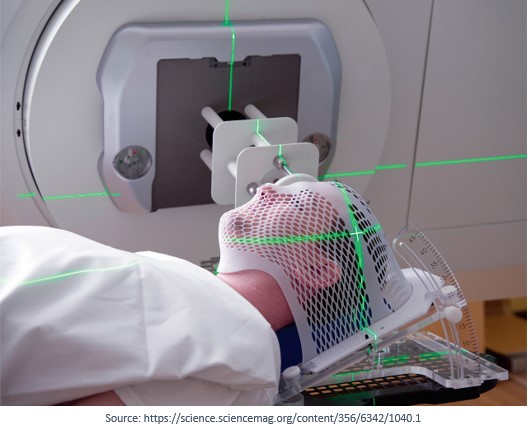Stereotactic radiotherapy is a technique of targeting radiotherapy precisely at a tumour. This kind of treatment is not accessible at all hospitals as it needs specialized equipment and skills.
However, it is available in some of the best neurology hospitals in Guntur, possessing skilled neurosurgeons in Guntur.
You might hear the term stereotactic radiosurgery, but it isn’t a type of brain surgery. It involves having a very high dose of stereotactic radiotherapy in a small area, often through a single treatment.
Now, let’s have an overview of stereotactic radiosurgery for treating various types of tumours.
What is Stereotactic Radiosurgery?

It is a non-invasive radiation therapy where a focused beam of radiation kills tumours and treat defects in the brain while sparing the healthy tissues. Stereotactic Radiosurgery is not a surgery, just a non-invasive procedure very similar to receiving a standard X-ray.
Who is Eligible for Stereotactic Radiosurgery?
A neurosurgeon and radiation oncologist decide if one can undergo the procedure.
The eligibility depends upon:
- Type of tumour
- Size of the tumour
- Location of the tumour
Advantages of Stereotactic Radiosurgery
- No pain
- No bleeding
- No surgical cuts and wounds
- Minimal exposure to radiation
- Minimal harm to the surrounding healthy tissues
- Extremely accurate
- Effective in elderly patients
- Quick procedure
- Fewer side effects
How is Stereotactic Radiosurgery performed?
Step 1: A frameless thermoplastic mask is attached to the head to keep the head in place.
Step 2: CT and MRI scans are performed to know the precise location of the tumour.
Step 3: Radiation doses are calculated as per the tumor size and location.
Step 4: Treatment is delivered in calculated doses.
Why is Stereotactic Radiosurgery required?
Traditional methods are ineffective in treating deep-seated spine and brain tumours due to their inability to reach the tumour. Stereotactic Radiosurgery can access distant tumours and break them effectively. Besides tumours in the brain and spine, skilled specialists implement stereotactic radiosurgery to treat tumours in the Neck, Lungs and Liver.
How does Stereotactic Radiosurgery Differ from External Beam Radiotherapy?
Stereotactic radiosurgery differs from external beam radiation in several ways. Firstly, and primarily, the equipment is considerably more complex and sophisticated by way of design and implementation.
The technologies that we use to identify the targets accurately are very similar to what the neurosurgeon uses when planning complicated surgery.
Only in this instance, we combine the technology with a high spec irradiation delivery system, thereby preventing a scalpel’s need. As some of the best neurosurgeon in Andhra Pradesh administer the radiation treatment with submillimetre accuracy, the risk of injuring surrounding healthy tissue is significantly less.
So, in many instances, the treatment can be employed in a very safe way with minimal risk of side effects both in the short and longer-term. However, the treatment is complex by design, but the patient’s journey throughout the delivery of stereotactic radiosurgery effortless.
Any Side-effects?
Stereotactic Radiosurgery can cause minimal side effects like:
- Headache
- Dizziness
- Fatigue
- Hair loss
- Itchy skin
How Long is the Procedure?
Experts conveniently execute the treatment in one half to an hour session, or occasionally your treatment may extend over five separate visits over one calendar week.
How Long is the Hospital Stay?
Treatment is painless without injections or cutting and can be given in the ambulatory setting without hospitalization or anaesthesia.


